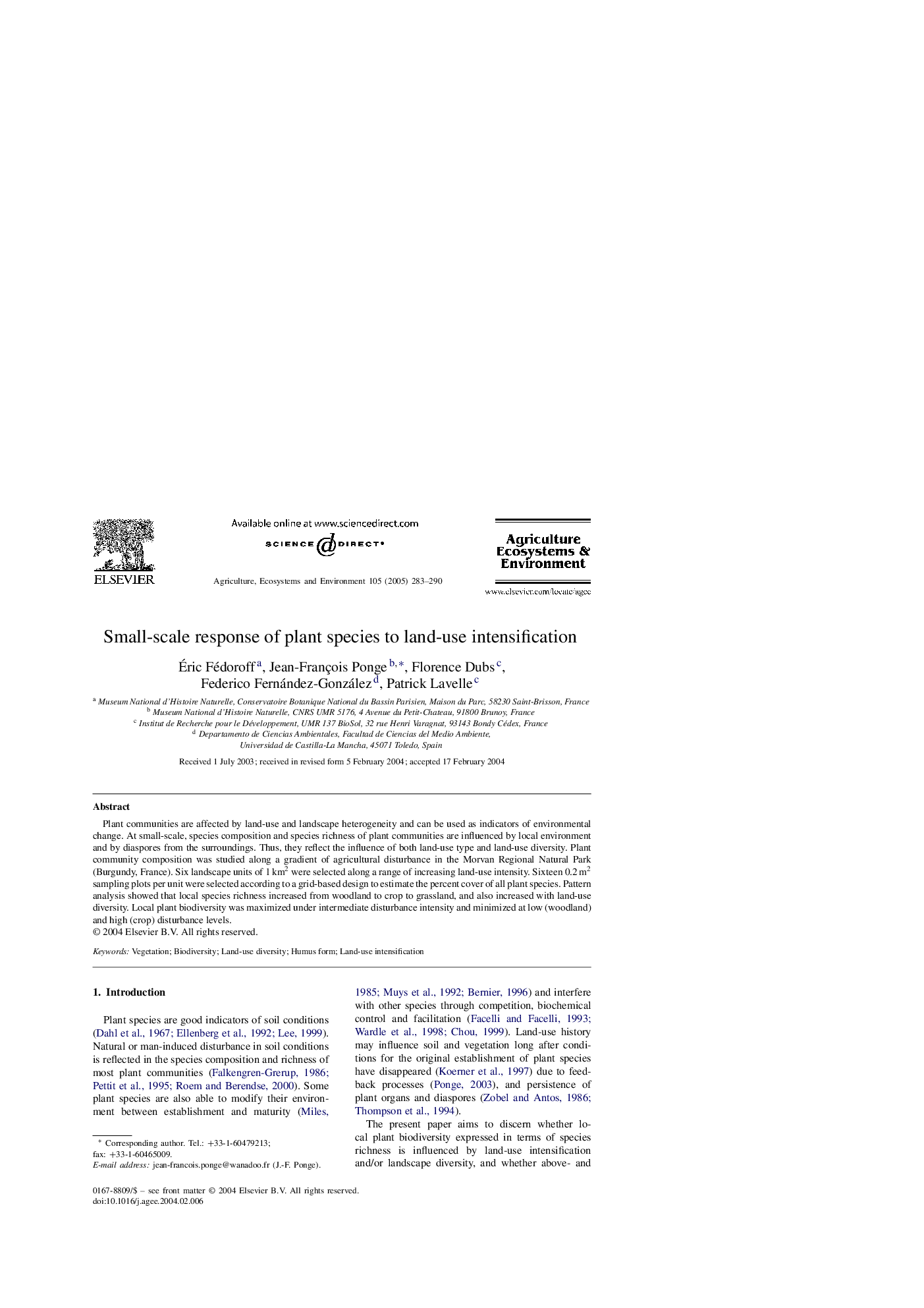| Article ID | Journal | Published Year | Pages | File Type |
|---|---|---|---|---|
| 8970897 | Agriculture, Ecosystems & Environment | 2005 | 8 Pages |
Abstract
Plant communities are affected by land-use and landscape heterogeneity and can be used as indicators of environmental change. At small-scale, species composition and species richness of plant communities are influenced by local environment and by diaspores from the surroundings. Thus, they reflect the influence of both land-use type and land-use diversity. Plant community composition was studied along a gradient of agricultural disturbance in the Morvan Regional Natural Park (Burgundy, France). Six landscape units of 1Â km2 were selected along a range of increasing land-use intensity. Sixteen 0.2Â m2 sampling plots per unit were selected according to a grid-based design to estimate the percent cover of all plant species. Pattern analysis showed that local species richness increased from woodland to crop to grassland, and also increased with land-use diversity. Local plant biodiversity was maximized under intermediate disturbance intensity and minimized at low (woodland) and high (crop) disturbance levels.
Related Topics
Life Sciences
Agricultural and Biological Sciences
Agronomy and Crop Science
Authors
Ãric Fédoroff, Jean-François Ponge, Florence Dubs, Federico Fernández-González, Patrick Lavelle,
